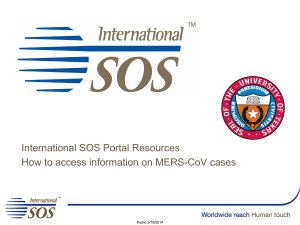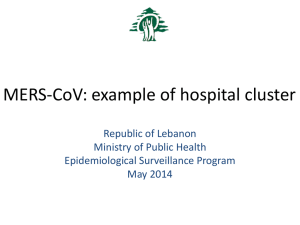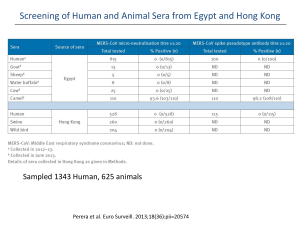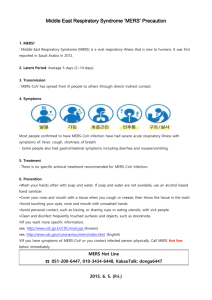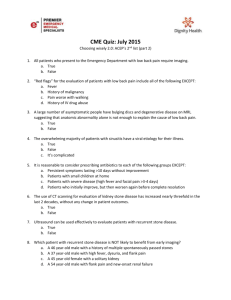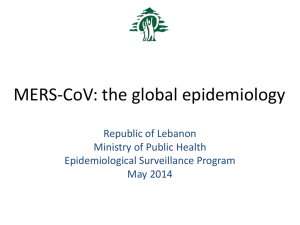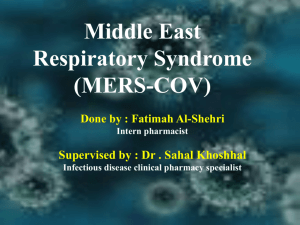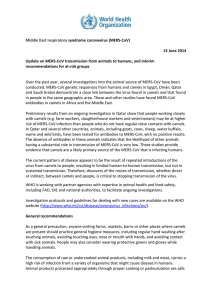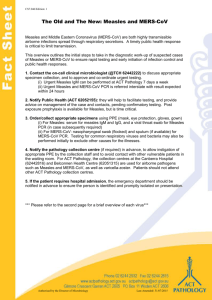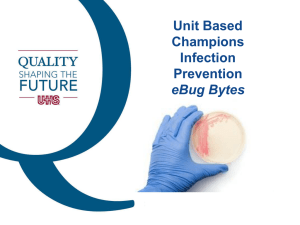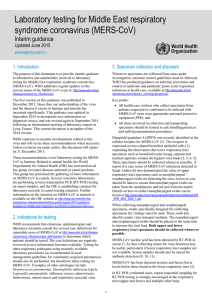2014 Exercise Scenario - Statewide Medical and Health Exercise
advertisement
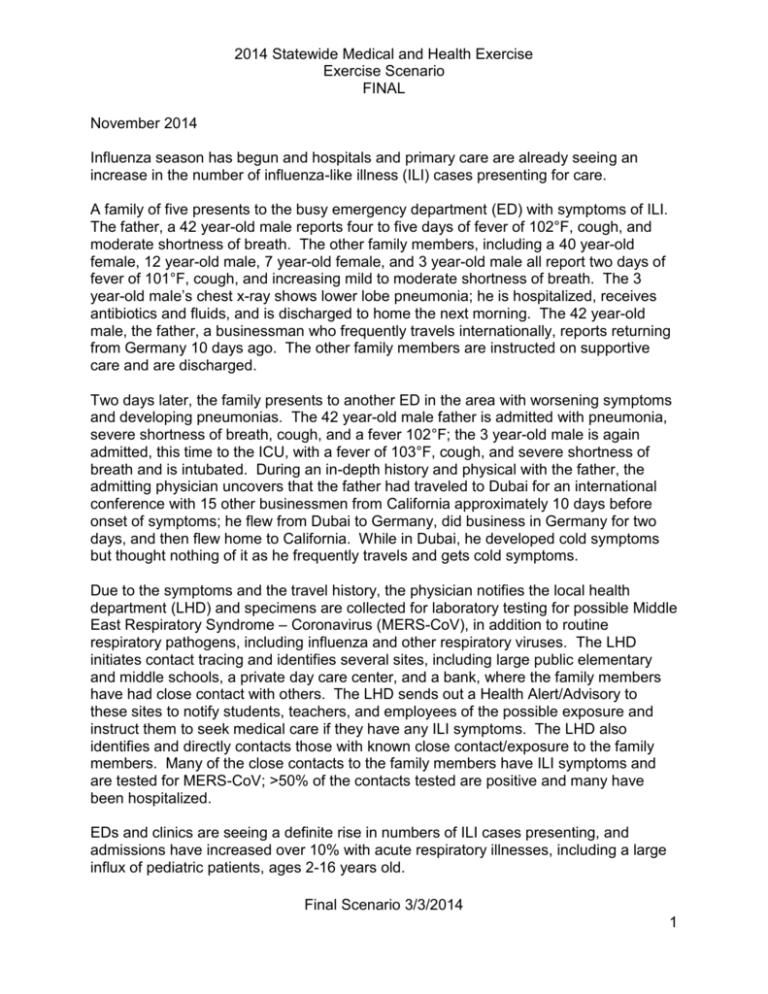
2014 Statewide Medical and Health Exercise Exercise Scenario FINAL November 2014 Influenza season has begun and hospitals and primary care are already seeing an increase in the number of influenza-like illness (ILI) cases presenting for care. A family of five presents to the busy emergency department (ED) with symptoms of ILI. The father, a 42 year-old male reports four to five days of fever of 102°F, cough, and moderate shortness of breath. The other family members, including a 40 year-old female, 12 year-old male, 7 year-old female, and 3 year-old male all report two days of fever of 101°F, cough, and increasing mild to moderate shortness of breath. The 3 year-old male’s chest x-ray shows lower lobe pneumonia; he is hospitalized, receives antibiotics and fluids, and is discharged to home the next morning. The 42 year-old male, the father, a businessman who frequently travels internationally, reports returning from Germany 10 days ago. The other family members are instructed on supportive care and are discharged. Two days later, the family presents to another ED in the area with worsening symptoms and developing pneumonias. The 42 year-old male father is admitted with pneumonia, severe shortness of breath, cough, and a fever 102°F; the 3 year-old male is again admitted, this time to the ICU, with a fever of 103°F, cough, and severe shortness of breath and is intubated. During an in-depth history and physical with the father, the admitting physician uncovers that the father had traveled to Dubai for an international conference with 15 other businessmen from California approximately 10 days before onset of symptoms; he flew from Dubai to Germany, did business in Germany for two days, and then flew home to California. While in Dubai, he developed cold symptoms but thought nothing of it as he frequently travels and gets cold symptoms. Due to the symptoms and the travel history, the physician notifies the local health department (LHD) and specimens are collected for laboratory testing for possible Middle East Respiratory Syndrome – Coronavirus (MERS-CoV), in addition to routine respiratory pathogens, including influenza and other respiratory viruses. The LHD initiates contact tracing and identifies several sites, including large public elementary and middle schools, a private day care center, and a bank, where the family members have had close contact with others. The LHD sends out a Health Alert/Advisory to these sites to notify students, teachers, and employees of the possible exposure and instruct them to seek medical care if they have any ILI symptoms. The LHD also identifies and directly contacts those with known close contact/exposure to the family members. Many of the close contacts to the family members have ILI symptoms and are tested for MERS-CoV; >50% of the contacts tested are positive and many have been hospitalized. EDs and clinics are seeing a definite rise in numbers of ILI cases presenting, and admissions have increased over 10% with acute respiratory illnesses, including a large influx of pediatric patients, ages 2-16 years old. Final Scenario 3/3/2014 1 2014 Statewide Medical and Health Exercise Exercise Scenario FINAL Two days later, CDPH and CDC laboratories confirm MERS-CoV infection in all members of the original family and multiple close contacts. With the confirmation of MERS-CoV, the high incidence of death in other countries, and intense media coverage, people with ILI symptoms are flooding the healthcare system for testing and treatment for MERS-CoV. CDPH and CDC issue Case Definitions for MERS-CoV Patient Under Investigation (PUI) A patient under investigation (PUI) is a person with the following characteristics: Fever (≥38°C, 100.4°F) and pneumonia or acute respiratory distress syndrome (based on clinical or radiological evidence); AND EITHER: OR OR History of travel from countries in or near the Arabian Peninsula within 14 days before symptom onset; Close contact with a symptomatic traveler who developed fever and acute respiratory illness (not necessarily pneumonia) within 14 days after traveling from countries in or near the Arabian Peninsula. Close contact is defined as a) any person who provided care for the patient, including a healthcare worker or family member, or had similarly close physical contact; or b) any person who stayed at the same place (e.g. lived with, visited) as the patient while the patient was ill. Is a member of a cluster of patients with severe acute respiratory illness (e.g. fever and pneumonia requiring hospitalization) of unknown etiology in which MERS-CoV is being evaluated, in consultation with state and local health departments. Confirmed Case A confirmed case is a person with laboratory confirmation of MERS-CoV infection. Probable Case A probable case is a PUI with absent or inconclusive laboratory results for MERS-CoV infection who is a close contact of a laboratory-confirmed MERS-CoV case. Reference websites on MERS-CoV: CDPH: http://www.cdph.ca.gov/programs/cder/Pages/MERS-CoV.aspx CDC: http://www.cdc.gov/coronavirus/mers/interim-guidance.html Final Scenario 3/3/2014 2
